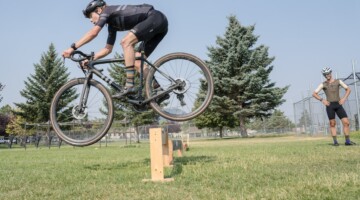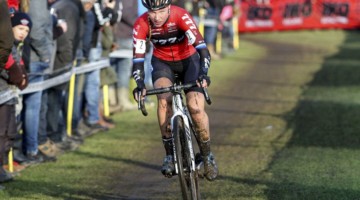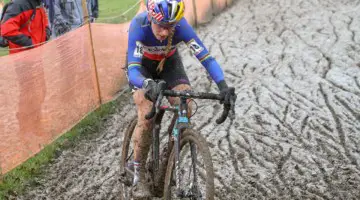Meds: Anti-inflammatories can help calm down inflammation and subdue the pain, but should not be relied upon or used instead of properly rehabilitating the injury. If your injury does not respond to the above steps and your physician approves, then they may be a prudent option. Typically many athletes dislike taking any medications (myself included) but this becomes another part of the treatment if your condition does not improve.
Physical Therapy: If symptoms do not alleviate themselves within two weeks of the injury, it may be time to seek out a health care professional that is familiar with your sport. You may be on track for a chronic problem and injuries are most easily treated within the first few weeks. Groin strains, while common, can be a result of much more complicated circumstances such as muscle tightness, muscle imbalances and muscle weakness in your core, hips, and pelvis. Symptoms of a groin strain can also mimic other conditions such as hernias and insidious low back pain. All the more reason to consult with a medical doctor and a physical therapist. Other options become available when you see a therapist such as assessing any muscular imbalances, restoring back and pelvic alignment, ultrasound, and soft tissue massage which you may need to completely resolve this injury.
Technique: Incorporating drills that specifically work on your technique can help prevent many injuries. In a complicated case, it’s difficult to determine if your form is causing your muscle imbalance and chronic groin injury or vice versa. Often a coach or trainer is invaluable to help treat these injuries and to determine where your form deviates and has the potential to cause your injury. A coach working with a health care provider can also allow you to maintain some sort of riding/racing schedule by limiting certain activities such as sprinting out of the turns. You may not like it, but it at least will keep you riding.
Prevention! Prevention! Prevention!
The key to preventing any muscle strain is to perform an adequate warm up. Because the muscles that make up your groin are involved in virtually all motions especially in cyclocross, an adequate warm up becomes paramount. In a perfect pre-race warm up, you would have time to dynamically stretch, ride and run part of the course, gradually increasing intensity with every lap. Follow this up with some ice and static stretching following your ride or race.
If you feel any sort of groin strain during a ride or pre-race warm up, stop and pay attention to your technique. Try to determine what it is that may have caused you strain. Is it running uphill? Mud, sand, or uphill barriers? These are the keys to remember later so you can focus on this in your training. Simply writing it off as a fluke is the basis of injury.
Other Groin Concerns

Failure to take care of early-season groin issues will sink you. photo: goinglikesixty.com
One very common cause of groin strains to those who ride road exclusively is simply running. As a preventative measure, some of you may need to increase your running time or mileage. Keep in mind that running promotes muscle breakdown and increases the need for recovery time. During race season, you should already have one running day in your program that typically consists of hill repeats. Consider adding another running workout at lactate threshold (moderate intensity) no longer than 15 minutes, emphasizing speed and maintaining your target HR instead of running uphill. Remember: these are workouts that should be built-up to rather than taken on all at once.
Your bike fit may also be an issue and something that needs to be looked at. This is best left to your coach and therapist to help determine the best possible fit for you during and after injury.
Summary and Stretches
Prevention: Always perform an active warm up of low intensity. Follow this with stretches of moderate intensity (3 repetitions of 30 seconds). Also make sure you remember to strengthen your hips, core and back at least 2 times per week.
If you have a groin strain, the warm up to any ride or race becomes central to recovery. Follow the prevention keys above; you can also use a hot pack prior to getting on the bike to loosen up the tissues. Following your ride, stretch again and use an ice pack. At home, continue stretching and applying an ice pack to calm down tissue irritation and swelling.
Consider seeing a physical therapist if symptoms persist. Also have your coach watch your technique and the way you ride to help determine the source of irritation to your groin.
Butterfly: Sit with your knees bent and the soles of your feet touching each other. Make sure you keep your back straight, hold your ankles/feet and gently lean forward at the hip.
To obtain a greater stretch, gently press your knees down with your elbows (not shown).
Standing Groin Stretch: Keep the leg of the side you wish to stretch straight, and gently lean onto the other leg until you feel a stretch. The picture shows stretching of the left side of the groin.
Make sure you keep your back straight
This stretch is essentially the butterfly stretch (above) on your stomach. Again make sure you keep your back straight.
Original article by David Perez, PT, DPT, CSCS is a Doctor of Physical Therapy and co-owner of Peak Orthopedic Physical Therapy in Berkeley and Sunnyvale, California (current form of article abridged for online content). He is a USA Cycling and USA Triathlon Certified Coach as well as an NSCA Certified Strength and Conditioning Specialist. He spends much of his own time recovering from injuries and helping athletes return to sport.
Get schooled in cyclocross with our Cyclocross Academy class list here, and make sure you’re subscribed to Cyclocross Magazine, your guide for getting into the sport, and upping your ’cross knowledge. Not subscribed yet? For the newbies, our Issue 21 has a great feature on buying your first cyclocross bike, and Issue 22 has a story on how to get into racing and what to expect at your first race.





























